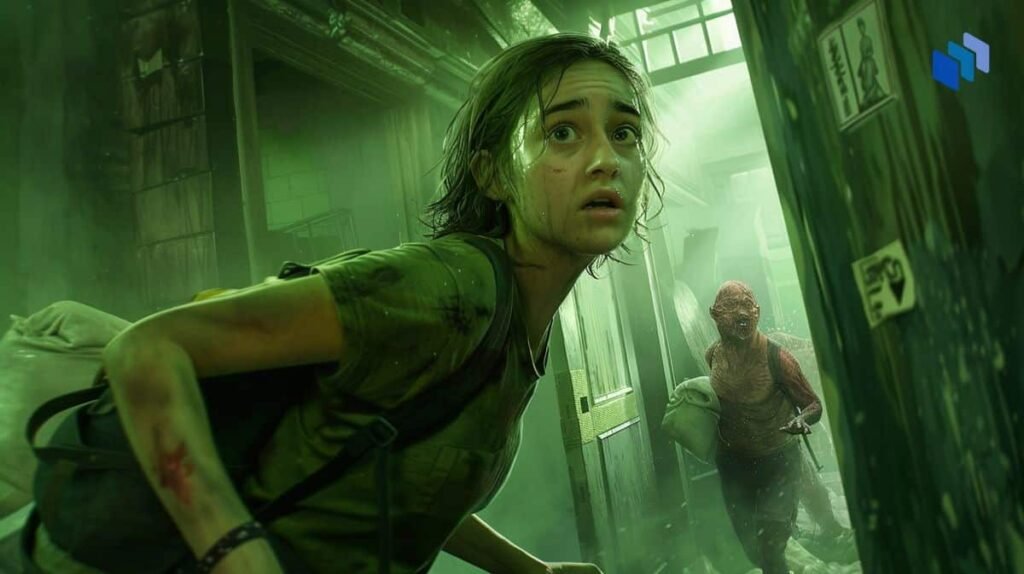
For most of us, the biggest consequence of making too much noise might be a scolding “shh” from the moviegoer behind us. But in A Quiet Place: The Road Ahead, you’re just one creaky floorboard away from being snuffed out by an alien threat that’s always listening—like a sinister version of Siri.
This instant-fail, stealth-heavy horror game effectively recreates the breath-holding tension of the films. It borrows heavily from titles like Alien: Isolation, where you play as a reluctant rodent in a deadly game of cat and mouse. The result is a consistently stressful experience from start to finish. Although my careful creep down the road ahead moved at a glacial pace, I occasionally snagged on some curious design decisions.
Set primarily four months after the alien invasion depicted in A Quiet Place: Day 1, the game follows college student Alex Taylor as she attempts to escape her abandoned hospital hideout and make a silent pilgrimage to an offshore safe haven. The setup is straightforward, but tender early moments with her likable boyfriend Martin and kind-hearted father Kenneth drew me into Alex’s plight before inevitable alien-inflicted tragedy forced her to flee.
Unfortunately, despite its strong beginning, the plot’s payoff in the dying hours is predictable. The overall story lacks the emotional resonance of Day 1. Still, there’s no shortage of affecting human artifacts to discover along the way. In the absence of interactions with other survivors, I got a strong sense of history from the spaces I explored—like heartbreaking family portraits crafted in crayon or a humorous note about a toilet paper-related riot left by a store owner. These world-building touches enriched the experience. I often found myself examining every detail as I moved in a constant state of slow motion, desperately trying to keep my every movement silent.
Though it’s a first-person adventure devoid of combat, The Road Ahead feels more like a “balking simulator.” Every step is a reluctant one; even the lightest squeak of a door hinge or crunch of gravel can alert an alien hunter, ending your slow walk to safety in an instant. My progress often relied on micro-movements on the controller, as I tiptoed through rooms and cautiously interacted with the environment.

Each room is purpose-built to test your coordination and fine motor skills. They’re often cramped and cluttered with noise-triggering traps. A misstep, such as brushing past hollow barrels or pulling open an air vent too eagerly, can spell doom. Fortunately, Alex is equipped with a homemade device that indicates the decibel level of her movements relative to ambient sounds. I spent the entire 7-hour journey anxiously trying to prevent its meter from lighting up with every interaction—much like trying to extract a wishbone in Operation without triggering the buzzer.
However, some noise-making hazards feel contrived. For instance, while shards of broken glass near shattered windows make sense, the presence of discarded paint cans on remote hiking trails seems improbable—like finding an abundance of garden rakes in a car park. Despite these oddities, I managed to suspend my disbelief and navigate the noise-making obstacle course created by the developers.
Alex faces internal challenges as well; being asthmatic means that overexertion from actions like climbing or carrying heavy objects can lead to noisy hyperventilation, alerting nearby monsters. This adds a layer of strategy in managing inhaler use, even if it feels a bit silly that they are single-use only.
The gameplay isn’t solely about sneaking silently; you also have basic tools to distract the keen-eared killers. Bricks and bottles can be thrown to create diversions, while items like hand flares serve dual purposes for illumination and distraction. However, it feels arbitrary that some inventory items can only be used in specific hands, leading to frustrating situations where you might find yourself caught in close quarters with a monster and lacking noise-making tools.
The game’s generous autosave system mitigates the penalties for dying. While enemy encounters might not be as terrifying as those in Alien: Isolation, they are more forgiving. The slow pace eventually wears thin, even as encounters with aliens evolve. Midway through, the monsters gain the ability to sense movement, forcing you to stand still and wait for their scanning to complete. Though these modest changes help preserve some tension, they can’t disguise the fact that much of the gameplay involves tedious tasks, like turning valves and searching for supplies.
There is a brief flashback sequence that allows you to fire a shotgun from a speeding van, but the game could have benefited from more dynamic detours to break up the slow pace.
The Road Ahead does a commendable job of transforming the uniquely silent horror of the film series into an interactive experience. I appreciated the handcrafted human touches that made the deserted spaces evocative, and the consistent autosave system meant my many deaths never became overly frustrating. However, despite maintaining a tense atmosphere with each careful step, the lack of significant plot twists or substantial gameplay variety prevents A Quiet Place: The Road Ahead from being an unmissable journey.